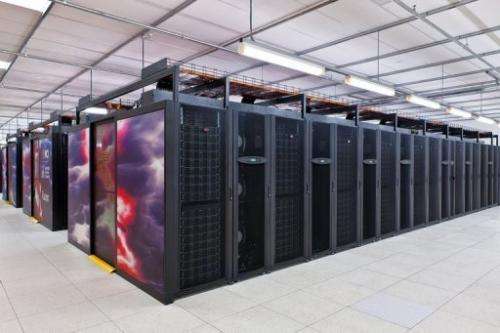Australia's new supercomputer a boon for climate scientists

Australia's most powerful computer was unveiled Wednesday, in a boost for climate scientists who need to crunch vast amounts of data to make forecasts and pinpoint extreme weather, officials said.
The Australian National University in Canberra has named the supercomputer Raijin after the Japanese god of thunder, lightning and storms.
"You could say that we in the climate science community have a need for speed," the head of the Bureau of Meteorology Rob Vertessy said.
"The simple fact is that supercomputer capacity is a major determinant of our success in this field, but it's always been a struggle to secure access to it."
Lindsay Botten, director of the ANU's National Computational Infrastructure centre where the computer is housed, said the machine can handle complex simulations and modelling much faster and at a higher resolution than previously available in Australia.
"Advanced computational methods form an increasingly essential component of high-impact research, in many cases underpinning discoveries that cannot be achieved by other means," he said.
Predicting extreme weather, which Australia frequently experiences, required millions of lines of code and complex information to be processed in an instant, said Andy Pitman from the Centre of Excellence for Climate System Science.

"You cannot do that on your home computer, you need a seriously large system in order to do that kind of processing," he said. "And fortunately we now have one of those."
The machine, estimated to be the 27th most powerful computer in the world, weighs 70 tonnes and has 57,000 processing cores (the equal of about 15,000 laptop computers) and 160 terabytes of memory (the equivalent of about 30,000 laptops).
The supercomputer was funded as part of Australia's infrastructure-building stimulus package in the wake of the global financial crisis.
© 2013 AFP



















